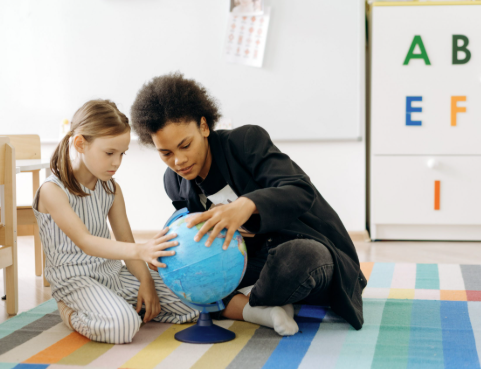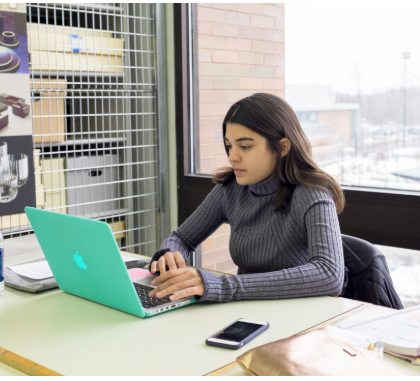Learning becomes more meaningful when students understand how to apply their knowledge outside the classroom. In high school, this connection between academics and real life helps students retain information, build confidence, and see the relevance of their education. Applying what you learn in real life involves recognizing the value of each subject and actively looking for ways to use that knowledge in everyday experiences, future careers, and personal development.
One of the most direct ways to apply learning is through real-world problem-solving. For example, students can use math skills to create budgets, compare prices while shopping, plan travel itineraries, or analyze data in a science project. These everyday tasks demonstrate that classroom concepts are not just theoretical—they are tools for navigating daily life. When students understand how to break down problems, interpret numerical information, or apply formulas, they build the confidence to make sound decisions in personal and professional settings.
In English and language arts, applying learning might mean improving communication and critical thinking. Writing clearly, understanding tone, organizing ideas, and reading critically are valuable in everything from writing job applications and emails to preparing for interviews or presenting ideas. These skills are also essential in personal relationships, where expressing thoughts and listening actively can lead to better understanding and stronger connections. Students who write blogs, engage in debates, or participate in storytelling learn to express themselves with clarity and purpose.
Social studies and history lessons can be applied by making connections to current events, community involvement, and civic responsibility. Understanding the roots of government systems or historical trends can help students make informed decisions, participate in elections, volunteer for local causes, or join student councils and advocacy groups. These connections promote awareness, encourage students to challenge injustices, and become engaged, informed citizens who contribute meaningfully to society.
Science education supports everyday applications in health, nutrition, and the environment. Whether understanding how the body works, reading food labels, interpreting product ingredients, or conserving energy, science helps students make smarter choices that impact their well-being and surroundings. Environmental science concepts can influence how students manage waste, conserve water, or use renewable energy. Many high school science programs also include labs, field studies, and simulations that mirror real-world careers in medicine, environmental research, and technology.
Technology and digital literacy have become essential in real life. Students who learn to use software, research databases, and multimedia tools can apply those skills in college, the workplace, or their own creative projects. Knowing how to evaluate online information, manage digital files, use collaborative tools, and stay safe on the internet is now a core life skill. Students can use coding, design, or editing software to build portfolios, launch online businesses, or participate in digital storytelling and content creation.
Another way to apply learning is through project-based assignments and internships. These experiences bridge the gap between school and the outside world by placing students in real-world scenarios. Internships, part-time jobs, and volunteer positions allow students to practice time management, teamwork, and professionalism—skills that are rooted in school learning but take shape through experience. Students who participate in job shadowing, workplace simulations, or capstone projects gain insights into future career paths and develop a clearer sense of direction.
Extracurricular activities and hobbies also offer opportunities to apply academic knowledge. A student in a robotics club might use math and physics principles to build a working model. A student who loves storytelling may use narrative techniques learned in class to write a script or produce a podcast. Students participating in student government apply leadership and policy-making concepts, while those in culinary clubs use chemistry and measurement skills in practical cooking tasks. These creative outlets bring classroom lessons to life and show how knowledge can be adapted to personal interests and goals.
Reflection is an important step in making learning meaningful. When students think about what they’ve learned and how it connects to their lives, the content becomes more than just information to memorize—it becomes a foundation for growth. Teachers can support this process through journaling, group discussions, presentations, and portfolio reviews that encourage students to explore personal applications. Self-assessments and peer feedback also help students recognize the impact of their learning.
Family and community involvement can enhance this process. Parents who discuss school topics at home, encourage curiosity, or take students to educational events or museums help reinforce learning outside the classroom. Community-based learning projects—such as service learning, local research initiatives, or mentorship programs—further strengthen the bridge between education and the real world.
By recognizing the relevance of school subjects and using them in practical ways, students gain a deeper appreciation for their education. Applying learning to real life not only boosts motivation and confidence but also prepares students to be thoughtful, capable individuals in a complex and ever-changing world. As students grow into adults, the habits of connecting what they learn to real situations empower them to continue learning, adapt with purpose, and contribute meaningfully to their communities and careers.


